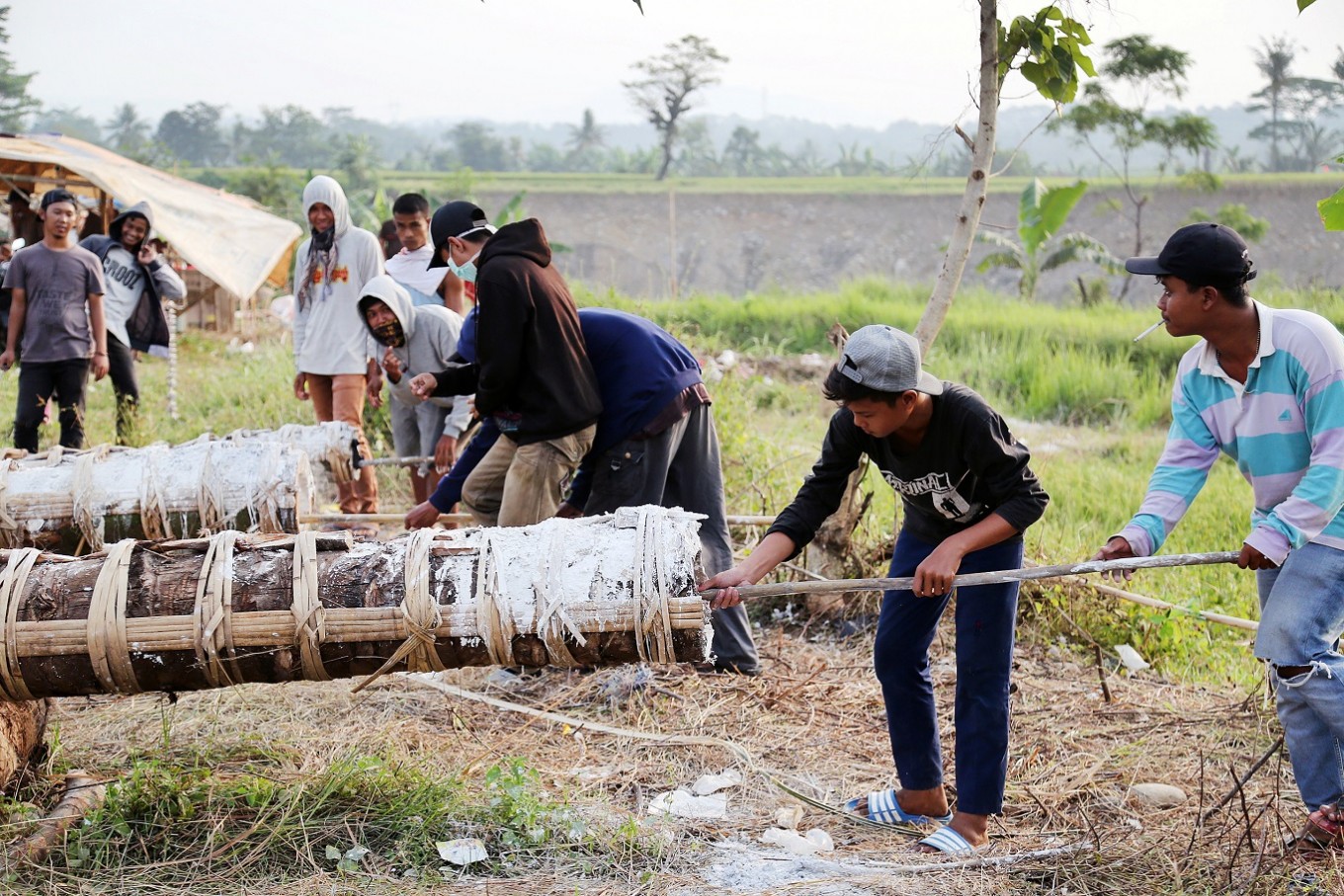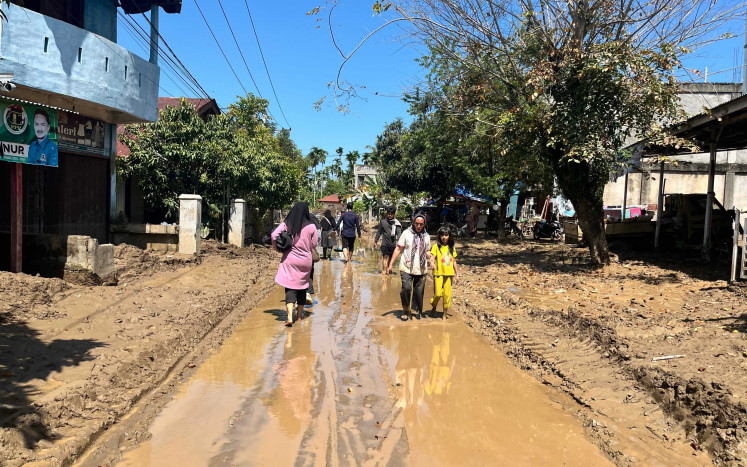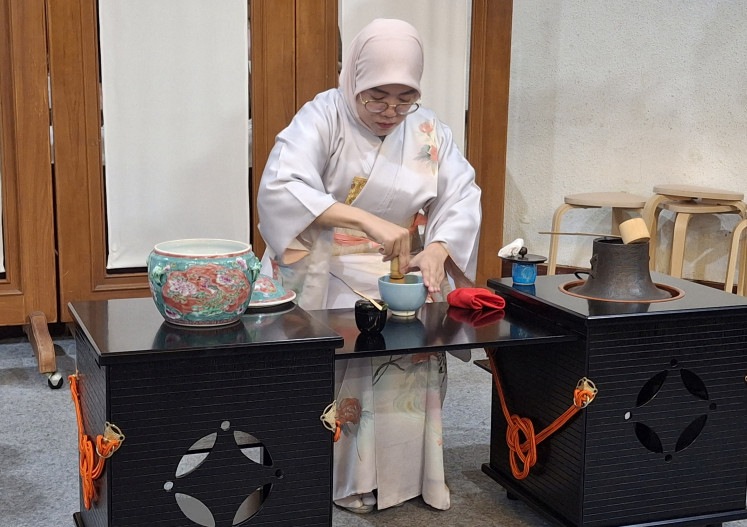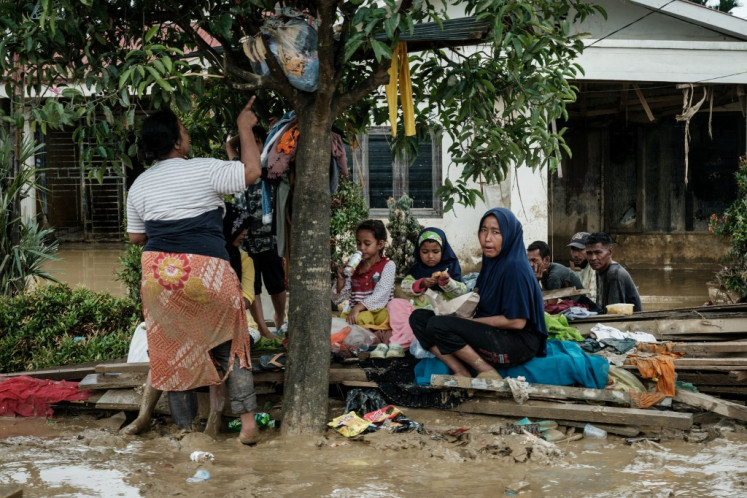Popular Reads
Top Results
Can't find what you're looking for?
View all search resultsPopular Reads
Top Results
Can't find what you're looking for?
View all search resultsImages: The cannons of Cipamingkis
Change text size
Gift Premium Articles
to Anyone
F
iring cannons during the fasting month of Ramadhan and the festivities of Idul Fitri has long been a tradition for the people living in Jonggol, Bogor regency, West Java.
The tradition usually takes place on the banks of the Cipamingkis River.
A locally made cannon is composed of two halves of a kapok tree trunk that are carved out and then joined back together, leaving a hollow core. Assembling the cannon is a time-consuming process that involves the work of several people.
The tree trunk halves are securely bound together with rattan and the splits are coated with matting to prevent carbide gas from escaping.
Before firing the cannons, residents prepare small pieces of carbide and drop them into a bowl made of zinc, which is already filled with water. Then the bowl is put into a hole in the tree-trunk tube.
After a while, a flame on a wooden stick lights up the fuse in the cannon hole. Afterwards, the thundering rumble of the gun reverberates on the bank of the river, a long way from the settlements.











